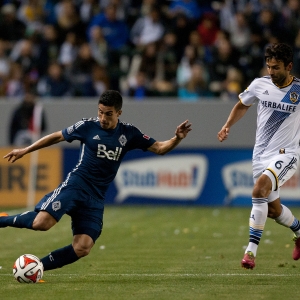Major League Soccer Uniform Rules and Regulations

Major League Soccer (MLS), the premier professional soccer league in the United States and Canada, has captured the hearts of fans across North America and beyond. As passionate supporters cheer on their favorite teams week after week, the players on the pitch showcase not only their skills but also their team spirit through their distinctive uniforms. In this blog post, we delve into the rules and regulations governing the attire of MLS players, shedding light on the meticulous details behind the design of each jersey, shorts, socks, and more.
Brief Background of Major League Soccer
Established in 1993, Major League Soccer emerged as a pivotal force in the development of soccer in North America. With the successful hosting of the 1994 FIFA World Cup in the United States, interest in the sport soared, paving the way for the creation of a professional league to sustain and nurture this newfound enthusiasm. In 1996, MLS kicked off its inaugural season with ten teams, marking the beginning of a remarkable journey that continues to evolve and expand to this day.
MLS Uniform Rules and Regulations
Central to the identity of each MLS team is its uniform, a visual representation of tradition, pride, and solidarity. However, behind the vibrant colors and bold designs lie a set of regulations meticulously crafted by the league to ensure uniformity and professionalism on the field.
- Jersey
The jersey, the quintessential component of any soccer uniform, serves as a canvas for team branding and sponsorship. Each jersey must prominently display the team's primary sponsor logo in accordance with league guidelines, alongside the iconic team crest and MLS logos. Furthermore, every player is assigned a unique number on their jersey, facilitating easy identification during matches.
- Shorts and Socks
Accompanying the jersey are the shorts and socks, which must complement the team's primary kit. However, in cases of color clashes with the opposing team, alternate colored shorts or socks may be required to maintain clarity on the field. Additionally, socks must cover the player's shin guards entirely, ensuring both safety and adherence to uniform standards.
- Shoes or Cleats
The shoes or cleats worn by players must meet specific criteria, including material suitability for soccer and compliance with safety standards. Notably, metal studs are prohibited, while any logos or symbols on footwear must be authorized to maintain uniformity across the league.
- Goalkeeper Kits
For goalkeepers, distinct regulations govern their attire, including jerseys that differentiate them from outfield players and compliance with the same logo and numbering rules. Goalkeeper shorts, socks, and accessories must also adhere to uniform guidelines, maintaining consistency in appearance across all positions.
As Major League Soccer continues to captivate audiences with its thrilling matches and passionate fanbase, the significance of team uniforms remains paramount. Beyond their aesthetic appeal, MLS uniforms embody the spirit of competition, unity, and tradition ingrained within each club.
Through adherence to meticulous regulations, MLS ensures that every player steps onto the field not only as an individual athlete but also as a representative of their team and the league as a whole. So, the next time you watch an MLS match, take a moment to appreciate the intricate details of each player's uniform and the rich history and tradition they embody.
Looking for Custom Soccer Uniforms?
Contact our team at Cisco Athletic for a FREE QUOTE so we can help gear up your team this season!

